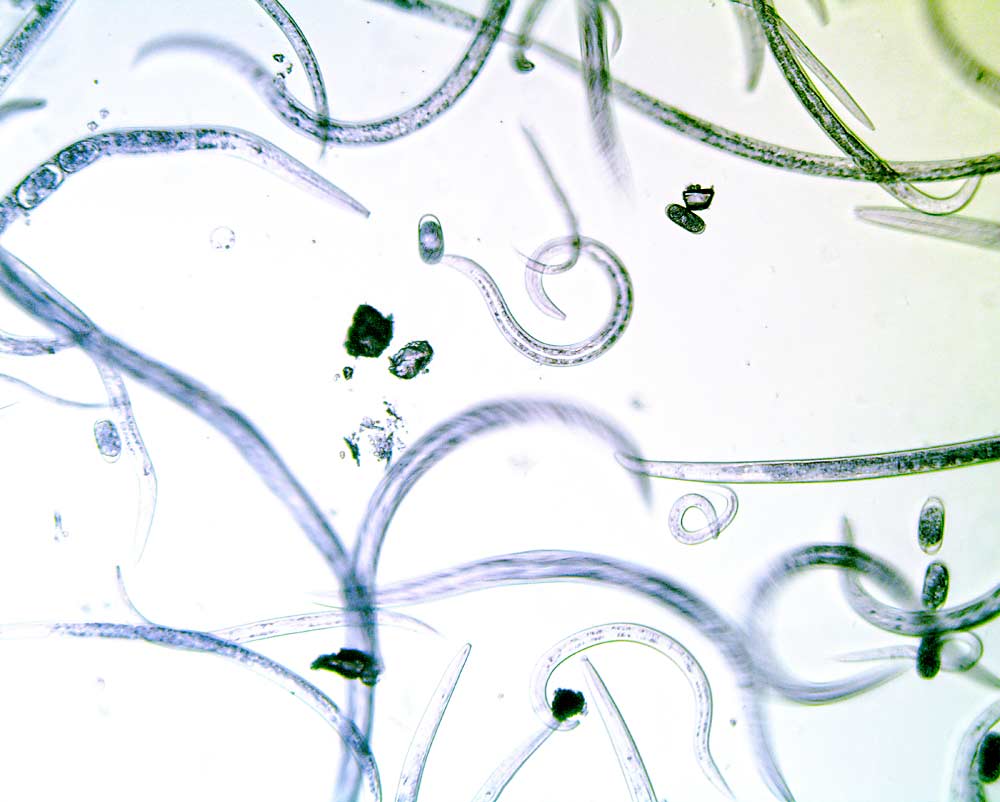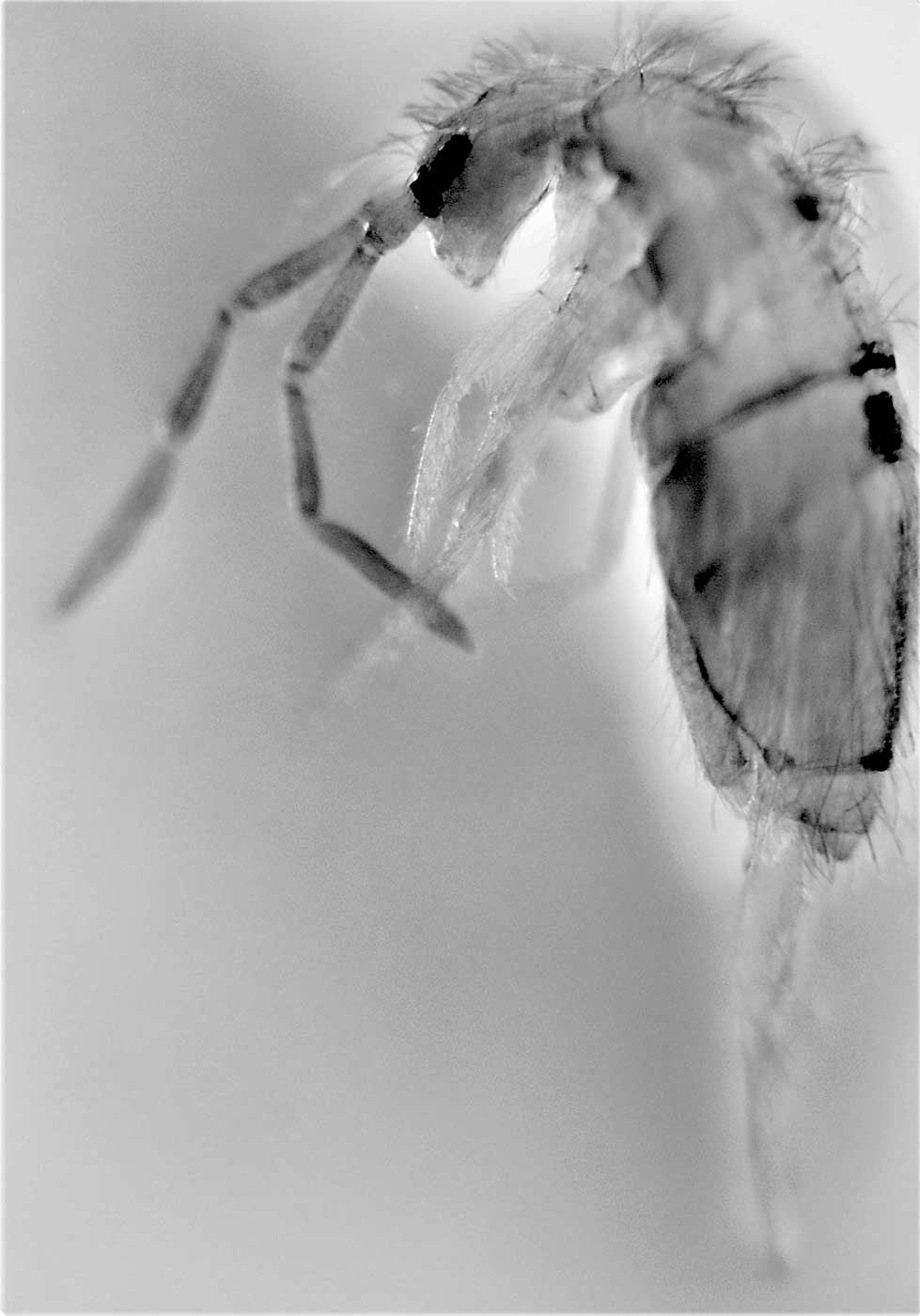
When I joined Washington State University Extension four years ago, I asked farmers what they wanted to learn more about. One common request was soil biology and soil health. This area is a great love of mine; I started my career studying nematodes as indicators of soil health. In 2016, my colleague, Lee Kalcsits, and I started on the adventure of measuring soil health in orchards and examining how it relates to orchard productivity. We have measured more than 100 orchards so far, and I wanted to share a few teasers about what we have found.
We all want healthy roots, right? Healthy soil can help provide healthy roots. Two indicators we are finding to be important to measure for root health are a root health bioassay and the number of plant-parasitic nematodes in the soil.
For the root health bioassay, we grow apple seedlings in soil from the farm and compare the soil that is heat-treated to kill soilborne pathogens to the soil that is left raw. If the plants in the heat-treated soil grow better than the plants in the raw soil, we know the ratio of the good guys to bad guys (pathogens) in the soil is too high in pathogens.
In 30 of the 100 orchard blocks we sampled, seedlings grew only half as well in raw soil compared to pasteurized soil. That tells me that there are a lot of orchards with high levels of pathogens, such as those that cause crown rot and replant disease.
Another important thing to look out for is the number of plant-feeding nematodes. Nematodes are microscopic roundworms that live in the soil. The largest of these tiny worms is only about the diameter of a single hair and one millimeter long. The tiniest are a tenth that size.
Plant-feeding nematodes have a mouthpart shaped like a needle that they stick into plant roots and use to pump out the juices. Some also live in the root, disrupting cells as they move through the root. Not only do these root feeders harm plants by stealing their nutrients, but all the tiny holes they poke with their mouthparts also become entry points for pathogens.
To measure nematodes in soil, we wash them out of the soil and then let them wriggle through a funnel capped with tissue paper so we can see just the number of living nematodes without all the soil in the way.
In 15 of 100 sites we measured, there were more than 80 lesion nematodes per 500 grams of soil. That’s the level we think can be harmful to young trees. That does not seem like a lot until you consider we have more than 2 million pounds of soil in the top 6 inches of every acre. That means each of those 15 sites had more than 147 million lesion nematodes per acre.
To give you an example of how important this is, consider one site where the grower had average yields of 40 bins per acre in a block with higher nematode counts (192 per 500 grams) versus 60 bins per acre in a block with lower nematode counts (100 lesion nematodes per 500 grams). This yield difference is likely due to stunting that occurred when the trees were first planted in areas with higher nematode pressure — and that they have never outgrown.

Now what about the good guys? Much of the time, the soil is teeming with tiny insects called microarthropods. Springtails, along with fungal-feeding and predator mites, are some of these good guys that live in the decomposing plant material on the soil surface and the top few inches of the soil.
Springtails are only a few millimeters in length, and they earned their name thanks to their ability to escape danger by “springing” high into the air with a forked tail-like furcula.
Soil mites such as Oribatids eat fungi, algae and dead plant material. These mites are extremely important. They break down dead leaves and other material, returning nutrients to the soil. Predator mites such as Mesostigmata suppress pests and mineralize nutrients as they eat their prey. These tiny soil insects can contribute up to 30 percent of mineralized nitrogen.
In multiple orchards, we found more than 20,000 microarthropods per square meter — but only where there was a layer of leaves, mow-and-blow grass, wood chips or other organic matter. Managing the orchard floor to have some organic matter on the surface may feed your microarthropod team.
Don’t forget the beneficial nematodes! These microscopic roundworms are one of the most abundant organisms on the planet and there are plenty of good guys in this group, too. Living in the water film around soil particles, some nematodes feed on bacteria, others on fungi or plants, and the kings of the nematode community are predators and omnivores.
Nematodes are very abundant in orchard soils. We measured 800 million nematodes per acre on average in the top 6 inches. Abundant fungal- and bacterial-feeding nematodes mineralize nitrogen. Nematodes also provide insight into the dynamic of the whole soil food web. When there are abundant predator nematodes, the soil food web is generally suppressive to pests and pathogens. Unfortunately, about half of the sites we measured had low numbers of predators and omnivores, indicating an opportunity to improve pest suppression.
Stay tuned to learn more as we look beyond NPK when we consider our soils. By measuring biological and physical properties of soil, we may be able to identify key limiting factors in our orchard sites. We hope to provide you with a suite of measurements relevant to your bottom line.
—by Tianna DuPont
Tianna DuPont is a tree fruit extension specialist at the Washington State University Tree Fruit Research and Extension Center in Wenatchee, Washington.
Soil health workshop
If you want to learn more about how to measure and manage soil health for productive orchards, mark your calendar for a Washington State University Extension workshop in November.
The full-day workshop will be held in Wenatchee on November 4 and in Yakima on November 5. Registration will open in August.
Topics on the agenda will include the final results from DuPont and Kalcsits’ study into what metrics matter most, soil structure, root health, plant-parasitic nematodes and soil health improvement practices such as mulching, cover cropping, and bio-renovation alternatives to fumigation.






Leave A Comment